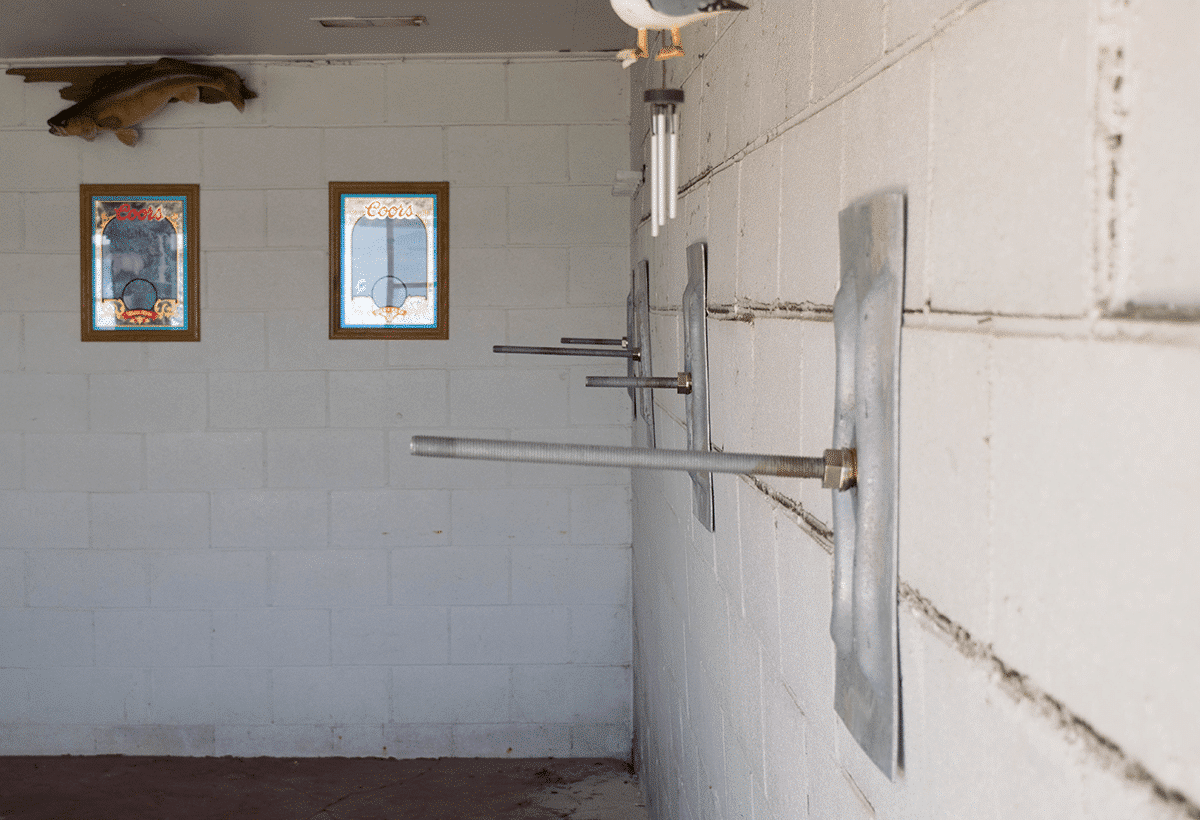
Bowing walls are a common issue in basements. When the groundwater levels in the soil around your basement rise (either naturally or due to rainfall), it causes hydrostatic pressure that pushes on your basement walls. Over time, this pressure causes the basement walls to crack, bulge, and bow. If left unaddressed, wall bowing can become a significant issue for your building’s structure and, in the worst-case scenario, lead to structural collapse. In this blog, we will tell you how to address bowing walls using wall anchors and what benefits you can get from using high-quality wall anchors.
What are Wall Anchors?
Wall anchors are a foundation repair method that uses earth anchors, steel rods, and wall plates to straighten a bowing wall. The wall plates are installed on the interior side of the bowing wall, whereas the earth anchors are installed in the ground outside the basement wall. Both of these components are connected by high-strength steel rods, which help stabilize the structure. The rods can be tightened over time to gradually straighten the walls. Wall anchors work by transferring the pressure from the wall to the stable soil, preventing further movement of the wall and restoring its original position.
When are Wall Anchors Used?
Wall anchors are usually used when a basement wall is bowing more than two inches. If the wall is bowing by less than two inches, you can potentially use lighter interventions, such as carbon fiber straps, which will prevent further movement. However, if the wall is bowing more than two inches, simpler repair methods may not work. That is when you should use wall anchors. Wall anchors will not only prevent further movement but, when gradually tightened, also pull the wall back into its original place.
Signs You Need Wall Anchors
Some telltale signs that you need wall anchors for your basement walls include:
- Visible bowing: Visible inward movement or bowing of the basement walls is a clear indication that you need to utilize wall anchors to stabilize your basement’s structure.
- Cracks and gaps: Horizontal cracks, stair-step cracks, and cracks between the wall and the floor or the wall and the ceiling are prominent signs of underlying damage.
- Water seepage: The underlying hydrostatic pressure often becomes visible in the form of water seepage before it actually starts affecting your wall.
- Musty odors: A persistent musty odor in the basement is a sign of excess humidity, moisture intrusion, and potential mold growth. These problems require a permanent solution.
How Do Wall Anchors Work?
Wall anchors are installed after minimal excavation, and they work effectively to restore the stability of your foundation.
Installation Process
The installation process of wall anchors typically looks like this:
- The first step is excavation. The earth anchor is installed in the soil near the bowing wall.
- A small hole is drilled in the basement wall. The size of the hole is equal to the diameter of the steel rod.
- A steel rod is inserted through the hole and connects the interior wall plate to the exterior anchor.
Gradual Realignment
The next step in the process is gradual realignment of the wall. Here’s how it works:
- Once the anchor is installed, the steel rod is tightened to pull the wall back towards its original position.
- Gradually, the anchor is tightened repeatedly to restore the wall to stability and maintain the structural integrity of the basement.
How Wall Anchors Stop Wall Movement
Wall anchors stop wall movement in three simple ways:
- The anchors in the ground are joined to the wall with high-strength steel rods. The inward bowing is minimized as the anchors pull the wall outward.
- With gradual tightening and alignment, the wall stops bowing further and eventually gets restored to its ideal position.
- The earth anchors and interior plates work together to counteract the lateral pressure on your basement wall.
Benefits of Wall Anchors
Wall anchors offer several advantages for basements, including:
Structural Stability
If wall bowing is not addressed, it can potentially lead to structural collapse. Wall anchors prevent bowing and reinforce the structural stability of your foundation.
Wall Realignment
Wall anchors not only stop the bowing of the wall, but they also realign the wall so that it is restored to an ideal position.
Long-Term Solution
Unlike other intervention methods, wall anchors are a long-term solution. As long as your basement is equipped with anchors, you won’t have to worry about wall bowing again.
Less Disruptive than Total Wall Replacement
If a wall bows more than your basement can handle, you may have to replace the entire wall, which is a complex, expensive, and disruptive process. Wall anchors require minimal excavation and are a lot less disruptive than total wall replacement.
Wall Anchors vs. Other Wall Repair Methods
In addition to wall anchors, you can repair bowing basement walls with the help of carbon fiber straps and steel I-beams as well. However, neither carbon fiber straps nor steel I-beams have the ability to pull the wall back to its original position. You can only do that with wall anchors. Additionally, unlike carbon fiber straps, wall anchors offer potential correction and relalignment of the wall over time. Other methods usually only work when the bowing is less than 2 inches. But wall anchors can potentially work even if your wall is bowing up to 4 inches. In cases of severe bowing or displacement, wall anchors are a preferred choice, which is exactly why they come at a slightly steeper price.
Final Thoughts
A bowing wall indicates that your basement’s structure is compromised by moisture. If not addressed, a bowing wall can lead to structural collapse. However, with the right methods, you can not only prevent bowing but also restore your wall’s original position. Wall anchors are a reliable, long-term, and cost-effective solution for bowing walls. Wall anchors are minimally disruptive and come only at a fraction of the cost of total wall replacement. Consult the experts at KC Waterproofing for more information about wall anchors.
FAQs
How long does the installation of wall anchors take?
The installation of wall anchors typically takes one to three days, depending on the size of the basement and the extent of the damage. We will provide you with an estimated timeline following an initial consultation.
Do wall anchors really straighten the wall?
Yes, wall anchors can really straighten a wall if it is not already extensively damaged. The anchors are designed to pull a bowing wall back gradually to its original, straight position.










